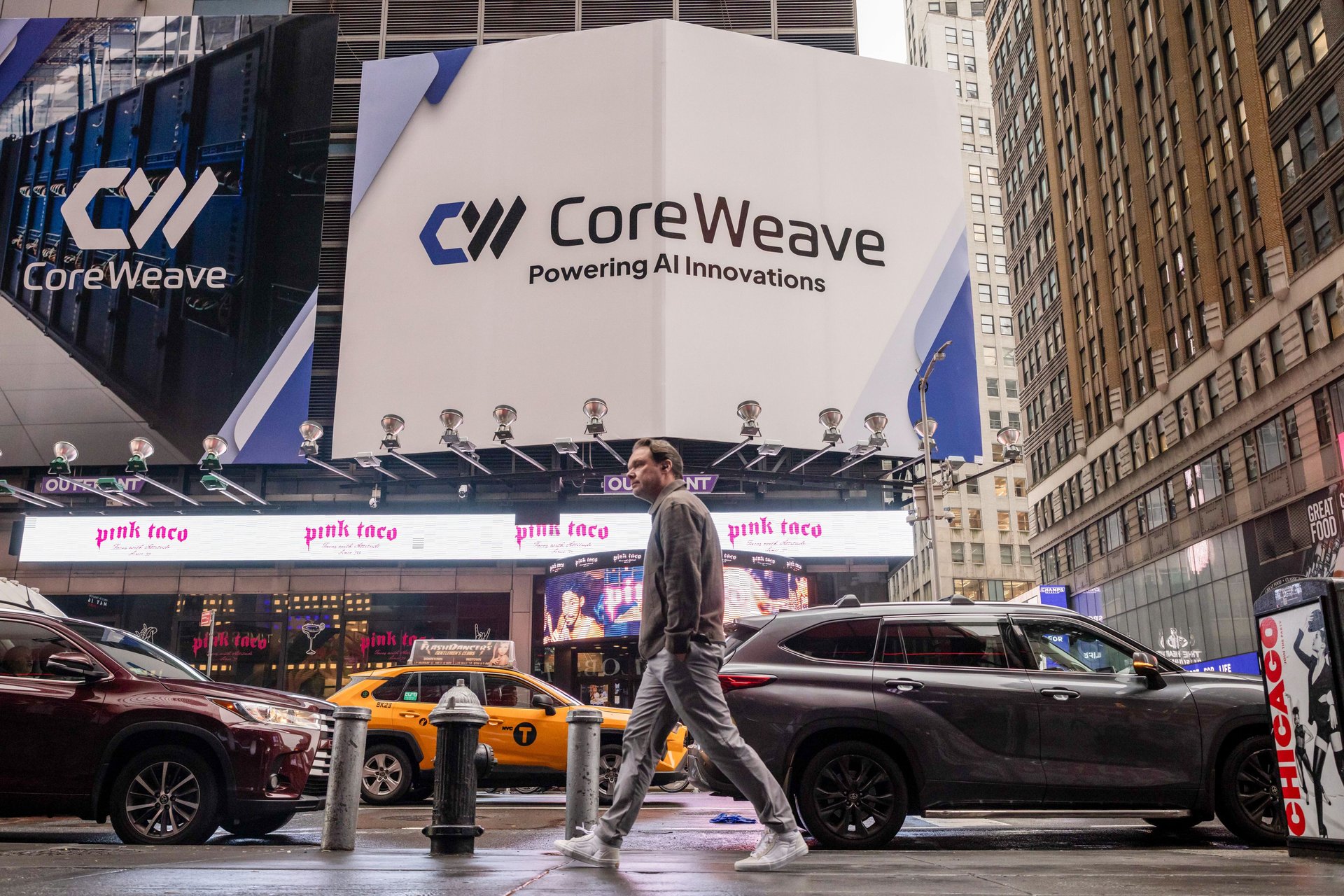CoreWeave's worse-than-expected losses outpace AI demand
CoreWeave’s revenue is soaring, but deep losses, mounting debt, and power bottlenecks are making investors question the cost of its rapid expansion

Yuki Iwamura/Bloomberg via Getty Images
CoreWeave may be riding the AI wave, but its profit line is drowning in the swell.
Suggested Reading
The AI cloud computing company sprinted through the second quarter with revenue that could have been a victory lap: $1.21 billion, trouncing Wall Street's $1.08 billion estimate and ballooning the company’s backlog to a staggering $30.1 billion. That revenue was up 207% from the $395 million it posted in the same quarter a year earlier and roughly 14% higher than the $1.06 billion it booked in the first quarter. But the margin of this quarter’s beat was smaller than it was earlier this year, hinting at a narrowing runway for upside surprises.
Related Content
AI demand is roaring, and CoreWeave, with its Nvidia-powered GPU cloud, is squarely on the front lines. Yet the applause turned muted when investors noticed something much less celebratory: the bottom line bled deeper than expected — a net loss of $290.5 million, almost $100 million worse than what analysts had penciled in.
That triggered an almost 10% after-hours selloff — the stock is down around 15% on Wednesday morning — as reality hit deeper than the earnings beat. Still, the stock price is up 218% year to date and has nearly tripled since its IPO.
CoreWeave CEO Michael Intrator chalked up the gap between the company’s strong revenue beat and its deeper-than-expected loss to one thing: infrastructure. Power, he said on the post-earnings call, is the choke point in this AI arms race. As the company expands rapidly, now running 33 AI data centers across the U.S. and Europe, its ability to scale those “power shells” hasn’t kept pace.
Intrator also leaned into the demand story on the earnings call. “Our strong second-quarter performance demonstrates continued momentum across every dimension of our business,” he said. “We are scaling rapidly as we look to meet the unprecedented demand for AI.”
Both Intrator and CFO Jason Rappaport told analysts that they expect meaningful easing of power constraints in the back half of 2025 as contracted sites come online and as acquisitions are integrated.
CoreWeave is one of the few players with the hardware, power capacity, and specialized infrastructure to rent out Nvidia’s highest-end chips at scale, and that scarcity has made it a go-to company for OpenAI, Microsoft, and a growing roster of AI startups, fueling aggressive expansion. But the cost of chasing that growth is staggering. Operating expenses hit $1.19 billion, nearly quadruple the $317.7 million from a year earlier, and capital expenditures hit a record $2.9 billion. The company’s debt now sits around $8 billion, and some analysts think the company could borrow another $10 billion before year’s end to keep pace with its buildout plans.
Revenue may be climbing at a breakneck pace, but so are the bills — and that will test just how long CoreWeave can sprint without losing its financial footing.
Investors are weighing strong demand against swelling costs. Analysts from D.A. Davidson didn’t sugarcoat things, writing in an analyst note, “CoreWeave does not currently generate enough profit to pay all its debt holders, certainly not equity holders,” reflecting broader anxiety about the company’s heavy capital needs. Goldman Sachs maintained a “Neutral” rating, citing execution risks; Barclays flagged free cash flow pressures; and Stifel, while raising its price target, cautioned that profitability “remains a long way off.”
CoreWeave is plowing ahead anyway. Management raised its full-year revenue forecast to $5.15–$5.35 billion — a modest bump but still a sign that clients are locking in more capacity — and expects third-quarter revenue between $1.26 billion and $1.3 billion, slightly above consensus. But questions about concentration risk are still swirling; a handful of big customers account for a large chunk of sales, meaning a shift in priorities from any one of them could ripple through CoreWeave’s results.
The company also remains committed to its $9 billion all-stock acquisition of bitcoin-miner-turned-data-center operator Core Scientific — seen as a way to offer what Rappaport said was “meaningful relief” on power constraints — adding 1.3 gigawatts of contracted capacity to its portfolio. But that, too, faces headwinds. Two Seas Capital, Core Scientific’s largest active shareholder, has said it will vote against the deal, arguing it “materially undervalues” the company and exposes investors to CoreWeave’s sliding share price.
Meanwhile, CoreWeave’s IPO lock-up expires this week, giving insiders the green light to sell shares — and potentially fueling even more turbulence.
CoreWeave’s roller-coaster moment isn’t unique in the AI infrastructure boom, but its speed and scale stand out as it races to capture as much of it as possible before the market shifts. The backdrop is crowded with challenges: Nvidia’s most advanced GPUs remain in tight supply, hyperscalers are accelerating their data center buildouts, and regulators in the U.S. and Europe are weighing tighter scrutiny of energy-intensive AI facilities.
CoreWeave is at the epicenter of this frenzy, racing to build more and faster, with two competing forces in play: the need to capture demand ahead of rivals, and the pressure to transform that demand into sustainable returns. The numbers show that the company is winning on revenue, securing massive long-term contracts, and building an infrastructure footprint that few can match. But the numbers also show a burn rate and debt load that leave little room for missteps. In a market as frothy — and as fickle — as AI, CoreWeave’s biggest challenge may be proving that scale alone can pay the bills.
